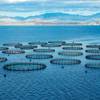The Swedish Club expects to achieve a balanced result by the end of this year. Frans Malmros, Managing Director, told members attending the Club’s AGM in Stockholm last week that “the picture looks pretty good” for 2003.
In common with other major mutuals, The Swedish Club experienced a difficult 2001, with several years of weak market conditions compounded by a negative claims trend. The latter trend did not extend into 2002, however, and the market hardened. The Club’s USD 3.9 million loss for 2002 was much smaller than forecast. Furthermore, the Club has now completed its tenth year free of supplementary call.
Frans Malmros said: “Our free reserves were strong and absorbed the losses. Today, our free reserves stand at USD 59 million and still exceed our claims reserves by 50 per cent. We now intend to replenish free reserves and stay on course for a balanced result by the year’s end.
“In the first four months of 2003, hull claims did not reach budgeted levels. As for P&I, one incident pushed the figure slightly above projection. Overall, however, we are set to return to positive results. Our focus is on ensuring premium income is in step with claims costs, to achieve a balanced account and build reserves.”
The Swedish Club’s hull portfolio, as at June 1, totalled 892 vessels of 31 million GT. The average age of vessels entered for Hull & Machinery stood at 10.7 years.
The P&I portfolio at June 1 amounted to 712 vessels of 14.8 million GT, with an average age of 12.3 years.
The Freight, Demurrage & Defence portfolio at June 1 comprised 202 vessels of 5.3 million GT, with an average age of 10.8 years.
The Swedish Club Managing Director commented: “With the average age of vessels in the P&I and H&M portfolios standing at just 11.4 years, we have an extremely young fleet - given that the average age of the world fleet is now 19 years.”
Frans Malmros underlined the Club’s continued commitment to loss prevention. He said: “It is important to keep in mind that, on the hull side, navigational accidents represent nearly 50 per cent of claims numbers and costs. Engine fires, while few in number, are very expensive. As for P&I, pollution liabilities represent just four per cent of claims but account for some 22 per cent of claims costs. New legislation will almost certainly ensure that pollution claims costs continue to increase. These trends will shape our loss prevention priorities.”
Sponsored Content
Protect Your Crew. Exceed Weld Standards.

MSC Sets a New Standard for Time Off in 2025, Plus Earn a $44,345 Bonus as an Able Seaman!

August 2025
 Read the Magazine
Read the Magazine

 Read the Magazine
Read the Magazine
This issue sponsored by:

Corn Belt Ports: Connecting America’s Heartland to Global Markets
Subscribe for
Maritime Reporter E-News
Maritime Reporter E-News is the maritime industry's largest circulation and most authoritative ENews Service, delivered to your Email five times per week








